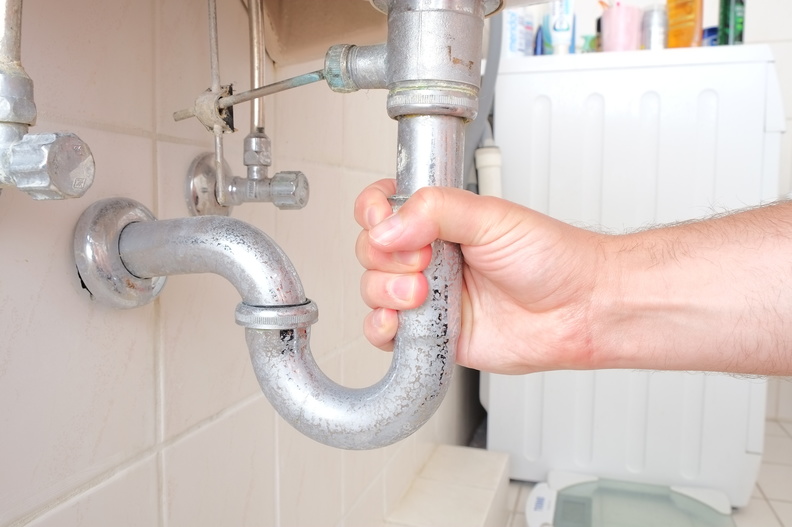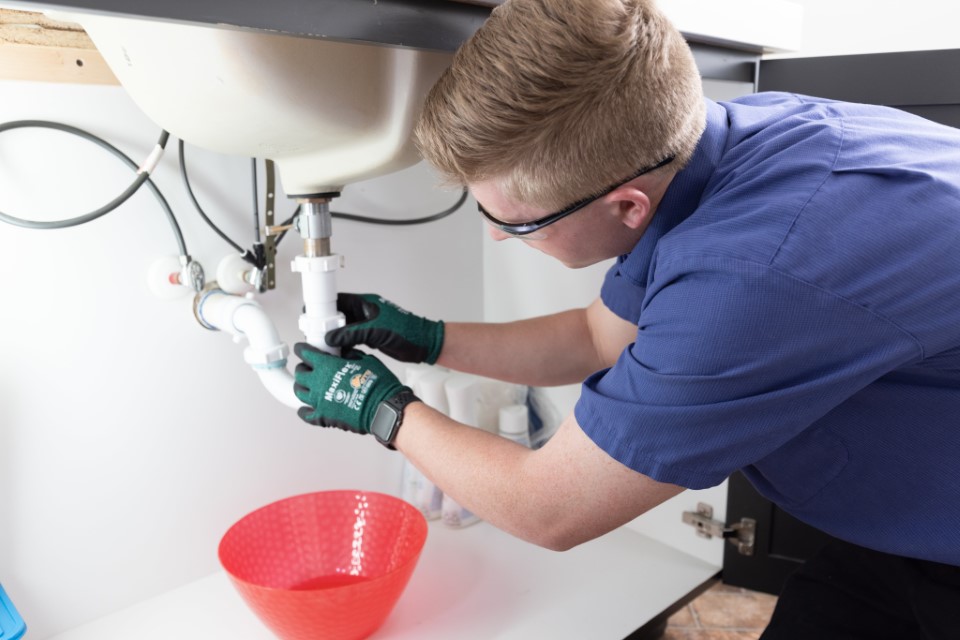Just how do you actually feel about Expert Tips for Emergency Plumbing Repairs?

Plumbing emergencies can strike at any time, causing stress and anxiety and possible damages to your home. Whether it's a burst pipe, a blocked drain, or a leaky faucet, knowing just how to take care of the scenario up until an expert plumbing technician shows up can save you from further complications. This write-up gives necessary emergency situation plumbing tips to help you minimize damages and gain back control during a plumbing situation.
Shut off the Water System
The initial step in any pipes emergency situation is to turn off the water supply. For local concerns, such as a leaking faucet or commode, shut off the valve near the component. When it comes to a major leak or ruptured pipe, locate your home's major water shut-off valve and turn it off quickly. Recognizing the place of these valves ahead of time can save beneficial time during an emergency situation.
Shut down Your Water Heater
In specific emergency situations, such as a ruptured pipe, it's important to turn off your water heater. This stops overheating or damages to the unit when water quits streaming. Turn off the power supply to the water heater (electrical or gas) and let it cool down to prevent possible dangers.
Temporarily Quit a Burst Pipeline
A burst pipeline can result in significant water damages in minutes. To minimize the concern:
- Clamp or Wrap the Pipeline: Use a pipeline clamp, rubber, or duct tape as a short-lived seal.
- Divert Water Circulation: Preferably, draw away the water into a pail or basin to restrict damage to bordering areas.
- Keep the Location Dry: Use towels or a wet/dry vacuum cleaner to remove standing water.
- Call a specialist plumbing promptly to address the issue completely.
Have an Emergency Pipes Kit
Prepare a fundamental pipes emergency set to handle minor concerns effectively. Your set needs to include: - Flexible wrench
- Plumbing professional's tape
- Pipe secures
- Towels and dustcloths
- A plunger
- Epoxy putty
- Container.
- Having these devices on hand can make a considerable distinction in your ability to handle emergency situations.
Unclog Drains Pipes Safely.
A blocked drainpipe can be a frustrating and untidy problem. Below's how to tackle it:. - Utilize a Bettor: For sinks or commodes, a plunger can usually dislodge minor obstructions. Guarantee you make use of the correct kind of bettor for the component.
- Warm Water and Recipe Soap: For grease-related clogs, pour a blend of warm water and recipe soap down the drain to break up the grease.
- Avoid Chemical Drain Cleansers: While alluring, chemical cleansers can cause more harm than great, particularly to older pipelines.
- If these approaches do not function, avoid using excessive force, as it may intensify the obstruction.
Handle Overflowing Toilets.
An overruning commode can create prompt chaos. Here's what you should do:. - Stop the Water Flow: Remove the tank lid and press down on the flapper valve to stop water from entering the bowl. Turn off the water supply to the toilet if necessary.
- Plunge Gently: Use a toilet plunger to get rid of the clog, yet stay clear of hostile plunging, which can cause splashing or additional damage.
- Consist of the Spill: Usage towels or a wipe to tidy up water swiftly to stop floor covering damages.
Address Tiny Leaks with Momentary Repairs.
Little leakages can swiftly come to be substantial troubles if left untreated. Make use of these momentary solutions up until expert assistance shows up:.
- Pipe Tape or Epoxy Putty: Apply water resistant tape or epoxy putty to briefly seal the leak.
- Rubber and Clamp Method: Wrap a piece of rubber or an old inner tube around the leakage and safeguard it with a tube clamp or air duct tape.
- Pails or Towels: Location containers under the leak to include water and prevent damage to floor covering or furnishings.
- While these repairs aren't long-term, they can assist reduce water loss and damage.
Manage Frozen Pipeline Carefully.
In cooler environments, icy pipelines are a typical emergency. If you presume an icy pipeline:. - Switch off the Water: Shut down the major water system to prevent a burst pipe.
- Thaw Gradually: Utilize a hairdryer, heating pad, or warm towels to thaw the pipeline gradually. Avoid open fires or extreme warmth, as these can damage the pipeline.
- Check for Leaks: Once the pipeline is thawed, check for fractures or leaks prior to turning the water back on.
Know When to Call a Specialist.
While quick fixes can assist temporarily, specific plumbing problems require prompt professional focus. Call a plumbing technician if:.
- A burst pipeline causes considerable flooding.
- Drains or commodes remain clogged up despite your initiatives.
- You notice relentless leaks or water stress issues.
- Your hot water heater is dripping or malfunctioning.
- Without delay calling a professional makes certain the problem is resolved properly and prevents additional complications.
Stop Further Damages.
Taking quick action to decrease damage can save you money and time in the long run. Right here's just how:. - Move Valuables: Eliminate furnishings, electronics, and other things from the affected location.
- Use Sandbags: For flooding circumstances, place sandbags around the location to reroute water.
- Turn off Power: If water has gotten to electrical outlets or home appliances, switch off the electricity to prevent shocks or fires.
Verdict.
Pipes emergencies can be overwhelming, however with the appropriate knowledge and tools, you can handle the circumstance properly until help shows up. By switching off the water system, resolving small leaks, and making use of temporary repairs, you can lessen damages and keep your home safe. Keep in mind, these ideas are short-lived solutions; always speak with a certified plumbing technician to take care of the origin of the trouble. Prep work and fast reasoning are your ideal allies in any plumbing emergency.
Top Tips for Emergency Plumbing Leak Repairs
Identifying the Leak Source
To properly address a plumbing leak, begin by locating the source using a flashlight and inspecting visible pipes for any signs of water accumulation or dripping. Look for water stains, mold growth, or musty odors which can indicate hidden leaks. Follow the water trail to pinpoint the origin of the leak. Check under sinks, around appliances, and near water heaters as these are common areas for leaks to occur.
If the leak is coming from a visible pipe joint, tightening the connection may solve the issue. Use a wrench to secure the joint without over-tightening, which could cause damage. For small cracks or holes, a temporary fix can be applied using epoxy putty or a pipe clamp until a permanent solution is implemented.
Remember to turn off the water supply before attempting any repairs to prevent further damage. Once the leak is identified, take necessary steps to either fix it yourself or contact a professional plumber for assistance.
Shutting Off the Water Supply
Before initiating any plumbing repairs, make sure you shut off the water supply to prevent further leakage. Locate the main shut-off valve for your property. This valve is typically found near the water meter or where the main water line enters your home. Turn the valve clockwise to shut off the water flow. If you’re dealing with a localized leak, like a sink or toilet, you can also shut off the water supply to that specific fixture by using the individual shut-off valves located underneath or behind the fixture.
Shutting off the water supply is essential to prevent more water from entering the system and causing additional damage. By taking this initial step, you can minimize the extent of the leak and prevent potential flooding in your home. Remember to inform everyone in the household about the water shut-off location in case of future emergencies. Once the water is off, you can proceed with identifying and addressing the leak source to resolve the issue effectively.
Temporary Leak Containment
If you’ve successfully shut off the water supply, the next step is to contain the leak temporarily to prevent further damage. Start by locating the source of the leak. Check for any visible cracks, holes, or burst pipes. Once identified, use materials like duct tape, pipe clamps, or rubber patches to cover the damaged area. For smaller leaks, a bucket or container can be placed underneath to catch dripping water.
If the leak is coming from a pipe joint, tightening the connection with a wrench might help reduce the leakage temporarily. Remember, these are just temporary solutions to prevent immediate damage. It’s essential to contact a professional plumber to assess and fix the issue permanently.
While containing the leak, keep an eye on the affected area for any signs of worsening. If the leak worsens or you’re unable to contain it effectively, don’t hesitate to contact emergency plumbing services for immediate assistance. Taking quick action to contain the leak can help minimize water damage and save you from costly repairs in the long run.
Contacting Emergency Plumbing Services
When facing a plumbing emergency, promptly reach out to professional plumbing services for immediate assistance. Contacting emergency plumbing services is essential to prevent further damage to your property. These professionals have the expertise and tools to address the issue quickly and effectively. When you call for emergency plumbing services, provide as much detail as possible about the leak, its location, and any steps you have taken to contain it. This information will help the plumbers assess the situation and come prepared to tackle the problem.
Ensure that you have the contact information for emergency plumbing services readily available, so you can act swiftly in case of a leak. Many plumbing companies offer 24/7 emergency services, so don’t hesitate to reach out, even if the leak occurs outside regular business hours. By contacting professional plumbers promptly, you can mitigate the damage caused by the leak and restore the functionality of your plumbing system efficiently.
Post-Repair Leak Prevention
To prevent future leaks after repairs, conduct a thorough inspection of all plumbing connections. Start by checking for any signs of corrosion, rust, or wear on pipes, fittings, and fixtures. Tighten any loose connections and replace any damaged parts to guarantee a secure fit. Additionally, inspect the seals around toilets, sinks, and tubs to make sure they’re intact and not deteriorating.
Consider installing water leak detectors in key areas of your home, such as near water heaters, under sinks, and around appliances like washing machines and dishwashers. These detectors can alert you to leaks early on, helping you address them before they cause significant damage.
Regularly monitor your water bill for any unexpected spikes, as this could indicate a hidden leak. If you notice a sudden increase in water usage without a corresponding change in your habits, it’s crucial to investigate the issue promptly.
https://callprofessorplumb.com/articles/top-tips-for-emergency-plumbing-leak-repairs/

I am just very enthusiastic about Plumbing Emergencies: Tips on What To Do Before and I really hope you enjoyed my piece. Those who appreciated our blog post kindly do not forget to share it. Thank you for your time. Kindly come by our website back soon.
Appointment
Comments on “Emergency Tips: What to Do Until Help Arrives”